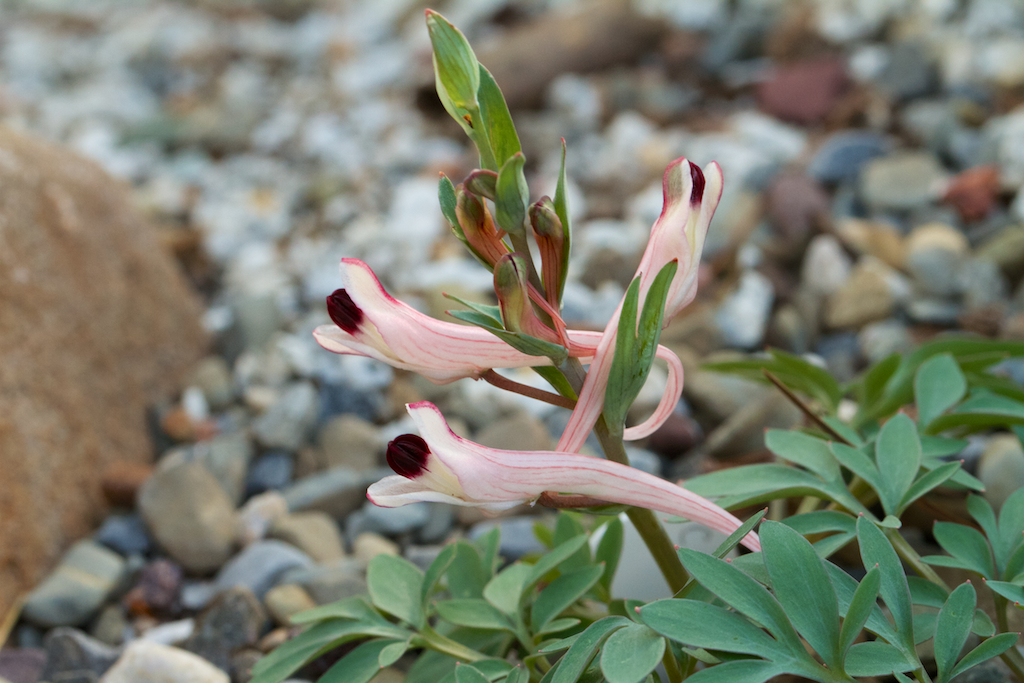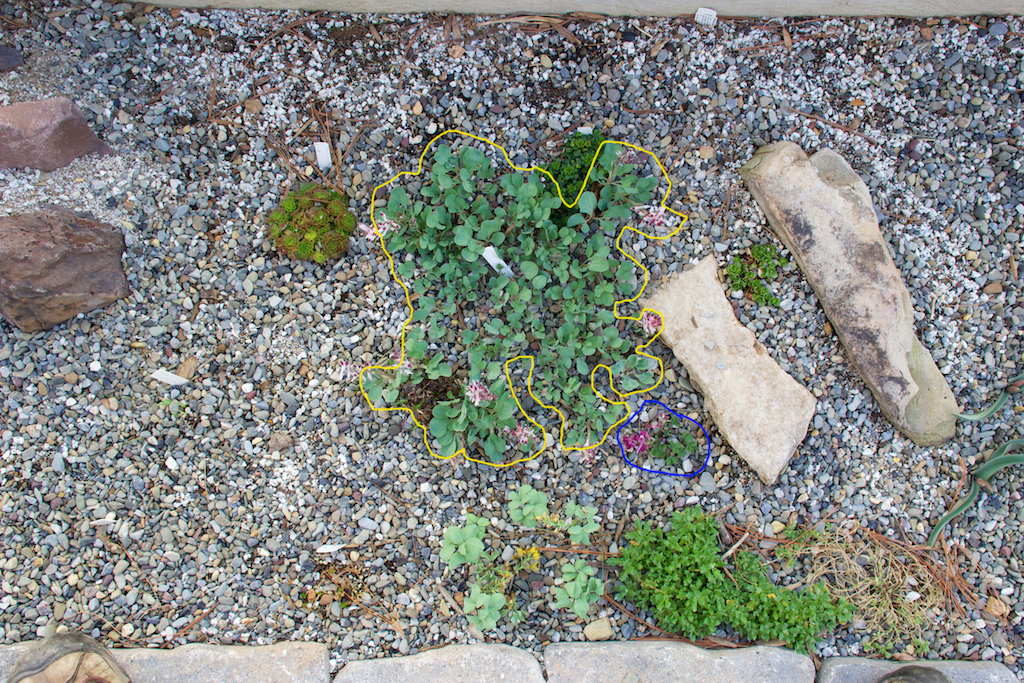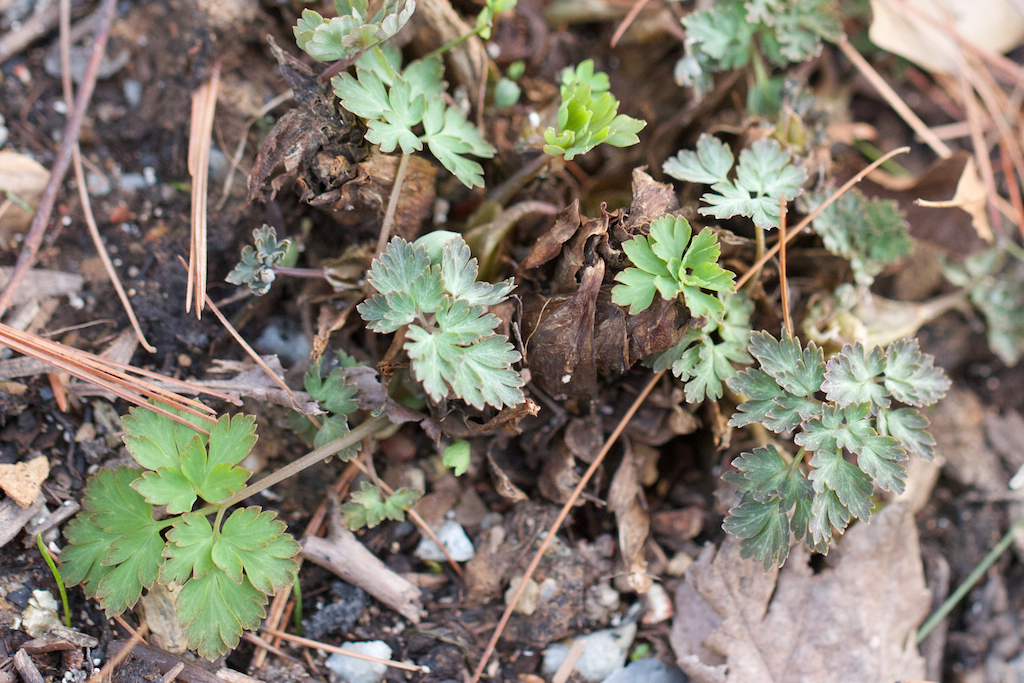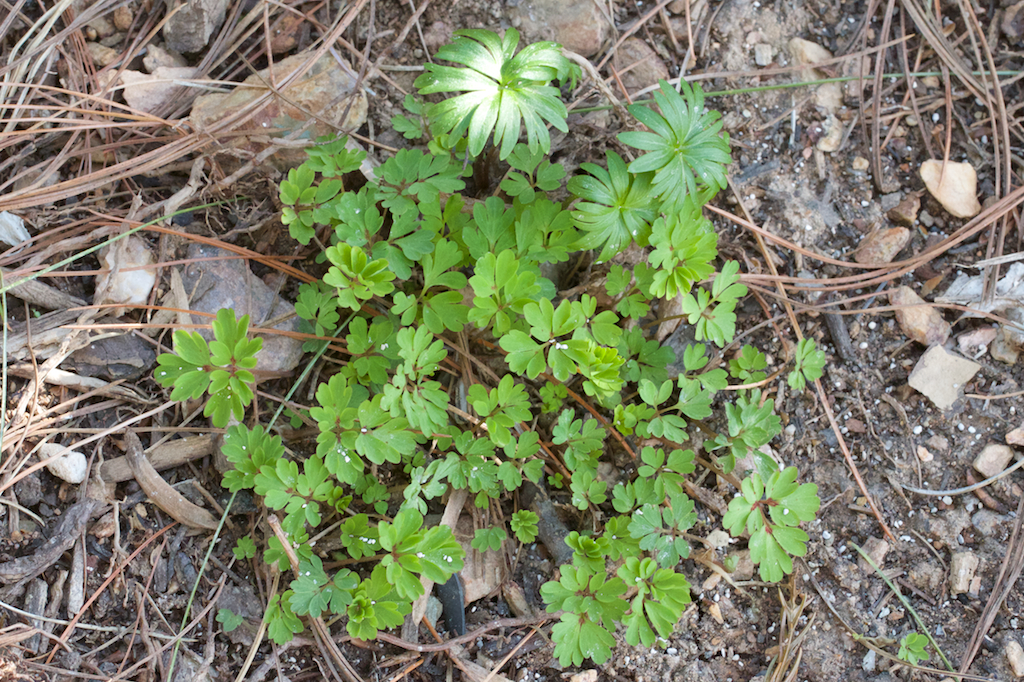I was walking in our woods this week and found this lovely Corydalis that I had planted last year. Anything that has overcome our brutal winter and the voracious deer that thrive in our woods deserves to be celebrated.
There are over 450 species of Corydalis and 150 of those were only discovered after 1980. They range from forests to mountains to meadows and are encountered as tuberous ephemerals, evergreens, and annuals. Though they are found all over the world, the center of this incredible diversity is Western China and that’s where the newer species have come to light. For the avid gardener new hybrids are adding to the mix of growing opportunities. Loosely speaking, most of the Corydalis you will find in commerce are divided into forest plants (woodsy soil) or mountain growers (fast draining rock garden mix).
Last year I ordered in a variety of the tuberous types to populate the new garden beds we’ve made and we’re starting to see the results.
Most of these are beautiful flowers with compact, deeply divided, almost ferny, foliage. The exception is Corydalis ledebouriana which is anything but compact. Growing from a single tuber it has exploded in the Alpine bed. To give a sense of this I took a picture of Corydalis ledebouriana from above. I’ve drawn a yellow line around the C. ledebouriana and blue line around it’s neighbor C. caucasica to contrast the two plants.
Seen from the side it looks like this.
Don’t confuse the Gymnospermium which has similar-looking leaves at the front of the picture. From a single tuber the C. ledebouriana is overwhelming its neighbors, including an Edraianthus and a Saxifraga. I’m sure I will have to move it to someplace that allows it to be rambunctious, but I was curious to see how far this would go. I saw nothing on the web that would leave one to expect this kind of growth.
All the Corydalis I’ve shown above are ephemeral and the foliage will gradually disappear after flowering. Another type of later flowering Corydalis has evergreen foliage, even in our climate zone, and will flower later in the season.
You can see that Corydalis are becoming one of my favorite flowers…












They look great, and nice job with the pictures. I can understand why they’re becoming a favorite with all that variety.
I’m trying to restrain myself and stick with the solida types, plus my budget would groan under the threat of a bunch of cool species!
Still waiting for them to wake up here since in the mountains of Pennsylvania the crocus are only just starting to bloom now.
It’s hard to argue with the C. solidas. There is so much color variation just within that species.
I have never heard of many of these species. Thanks for showing them. If they are as easy to grow as the one I already have, I should get more.